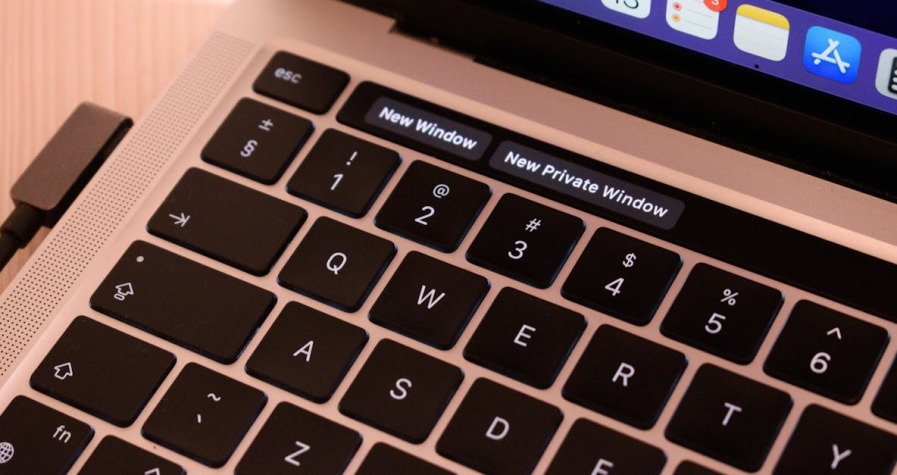You’ve probably heard the old saying: “Money doesn’t grow on trees.” But what if your crypto could grow while you sleep? Instead of letting your digital assets sit idle in your wallet, collecting digital dust, you can put them to work,earning passive rewards without the stress of day trading or watching charts 24/7.
That’s where Binance Earn comes in. Whether you’re a crypto newbie or a seasoned holder, Binance Earn offers a suite of financial products designed to generate passive income from your holdings. From simple savings accounts to staking rewards that help secure blockchain networks, there’s something for everyone,regardless of your risk tolerance or investment timeline.
In this guide, you’ll learn how Binance Earn and staking work, which products fit your goals, and how to maximize your returns while managing risk. Let’s immerse and make your crypto start pulling its weight.
Key Takeaways
- Binance Earn allows you to generate passive income from cryptocurrency holdings through products like Flexible Savings, Locked Savings, and staking, without active trading.
- Staking on Binance supports major cryptocurrencies like Ethereum, BNB, Cardano, and Solana, enabling you to earn rewards by helping secure Proof-of-Stake blockchain networks.
- Locked products offer higher APYs in exchange for committing funds for set periods (30-90 days), while flexible options provide lower yields but allow anytime withdrawals.
- Diversifying across multiple Binance Earn products reduces risk and balances liquidity needs with higher-yield opportunities for maximizing returns.
- APYs fluctuate based on market conditions and network demand, and unlike traditional bank accounts, Binance Earn products carry crypto volatility risk and lack government-backed insurance.
- Getting started with Binance Earn is straightforward—simply navigate to the Earn section, select a product and cryptocurrency, deposit your assets, and start earning passive rewards automatically.
Understanding Binance Earn: An Overview of Passive Income Options

What Is Binance Earn and How Does It Work?
Binance Earn is essentially a one-stop shop for earning passive income on your cryptocurrency. Think of it like a high-yield savings account, but for digital assets. Instead of your Bitcoin, Ethereum, or BNB just sitting in your spot wallet doing nothing, Binance Earn lets you deposit those coins into various financial products that generate rewards over time.
The concept is straightforward: you select a product (like Flexible Savings, Locked Savings, or Staking), deposit your chosen cryptocurrency, and start earning interest or network staking incentives. Depending on the product you pick, rewards can be paid out daily, weekly, or at the end of a set term. Some products allow you to withdraw anytime, while others lock your funds for a predetermined period in exchange for higher returns.
Binance handles the heavy lifting behind the scenes,whether that’s lending your assets to borrowers, participating in blockchain consensus mechanisms, or pooling funds for decentralized finance (DeFi) strategies. You simply reap the benefits without needing advanced technical knowledge or active management.
Key Benefits of Using Binance Earn Products
Why should you consider Binance Earn instead of just holding crypto in your wallet?
Passive income without active trading. You don’t need to be glued to price charts or make split-second buy/sell decisions. Once you’ve deposited your assets, they work for you automatically. This is perfect if you’re a long-term holder (a “HODLer” in crypto slang) who believes in the future of digital assets but wants to generate returns in the meantime.
Product variety for different strategies and risk profiles. Binance Earn isn’t a one-size-fits-all solution. Whether you want the flexibility to withdraw anytime or you’re comfortable locking funds for 90 days to earn higher yields, there’s a product tailored to your comfort level. From ultra-conservative savings products to higher-risk DeFi investments, the range is impressive.
Flexible or higher-yield locked options. Need liquidity? Go flexible and earn modest interest with the ability to pull your funds anytime. Ready to commit? Lock your assets for a fixed term and enjoy significantly better annual percentage yields (APYs). The choice is yours, and you can adjust your approach as your financial situation or market outlook changes.
Secure infrastructure and ease of use. Binance is one of the world’s largest and most reputable crypto exchanges, with robust security protocols and a user-friendly interface. You don’t need a PhD in blockchain to get started,everything is accessible via a few clicks on desktop or mobile.
Exploring Binance Staking: Earning Rewards on Your Holdings

Staking is one of the most popular ways to earn passive income in crypto, and Binance makes it incredibly accessible. But what exactly is staking?
At its core, staking involves committing your tokens to support the operations of a blockchain network,specifically, networks that use a Proof-of-Stake (PoS) consensus mechanism. Instead of energy-intensive mining (like Bitcoin’s Proof-of-Work), PoS networks rely on validators who lock up tokens to secure the network, validate transactions, and create new blocks. In return, these validators earn rewards,and when you stake through Binance, you’re essentially participating in that process without needing to run your own validator node.
Binance offers staking for a wide range of leading tokens, including Ethereum (ETH), Binance Coin (BNB), Cardano (ADA), Solana (SOL), Avalanche (AVAX), and many others. The platform handles all the technical requirements, so you get the rewards without the complexity.
The Difference Between Locked and Flexible Staking
When you’re ready to stake, you’ll face a choice: locked or flexible staking. Here’s how they stack up:
| Locked Staking | Flexible Staking | |
|---|---|---|
| Access | Funds locked for a set term (e.g., 30, 60, 90 days) | Withdraw anytime |
| Reward Rate | Higher APYs | Lower APYs |
| Liquidity | No access until term ends | Immediate access |
| Ideal For | Long-term holders seeking maximum yield | Those needing flexibility and liquidity |
Locked staking is ideal if you’re confident you won’t need those funds anytime soon. You’ll commit your tokens for a specific period,often 30, 60, or 90 days,and in exchange, you’ll enjoy a higher annual percentage yield. The downside? You can’t touch those funds until the term expires, even if the market takes an unexpected turn.
Flexible staking, on the other hand, offers more wiggle room. You can withdraw your staked assets at any time (usually within a day or two), but you’ll earn a lower APY as a trade-off for that liquidity. It’s a great option if you’re still finding your footing in crypto or if you want to keep your options open.
Which Cryptocurrencies Can You Stake on Binance?
Binance’s staking catalogue is constantly evolving, with new tokens added regularly. Some of the most popular staking options include:
- Ethereum (ETH): One of the most widely staked assets, especially after Ethereum’s transition to Proof-of-Stake.
- Binance Coin (BNB): The native token of the Binance ecosystem, often offering attractive staking rewards.
- Cardano (ADA): Known for its research-driven approach and solid staking yields.
- Solana (SOL): A high-performance blockchain with competitive staking returns.
- Avalanche (AVAX): Another popular PoS network with growing adoption.
Availability can vary based on demand, network conditions, and Binance’s product updates, so it’s smart to check the Earn section regularly to see what’s currently on offer.
Binance Savings: Flexible and Locked Options Explained

If staking sounds a bit too technical or you’re holding assets that aren’t eligible for staking, Binance Savings might be your best bet. Savings products work similarly to traditional bank savings accounts,you deposit crypto, earn interest, and choose between flexible or locked terms.
Flexible Savings is as straightforward as it gets. Deposit your crypto, earn daily interest, and withdraw anytime you want. The APY is typically lower compared to locked or staking products, but the trade-off is complete liquidity. Think of it as a checking account that actually pays you interest,something most banks stopped doing a long time ago.
Locked Savings, meanwhile, requires you to commit your funds for a predetermined period,commonly 30, 60, or 90 days. In return, you’ll earn a higher APY than flexible savings. The catch? You can’t withdraw early without forfeiting rewards or facing penalties, so make sure you won’t need that liquidity before locking it up.
Binance Savings supports a wide variety of cryptocurrencies, including stablecoins like USDT and USDC, which can be an attractive option if you want to earn yield on assets pegged to the US dollar without exposure to crypto volatility. It’s also worth noting that savings products are often easier to understand than staking, making them a solid entry point for beginners.
The main appeal of savings products is simplicity combined with predictability. You know what you’re earning, you understand the terms, and you don’t need to worry about the technical underpinnings of blockchain consensus.
How to Maximize Your Returns with Binance Earn Strategies

Once you’ve got the basics down, the next question is: how do you squeeze the most value out of Binance Earn? Here are some strategies to help you optimize your passive income.
Diversifying Across Multiple Earn Products
Just like in traditional investing, diversification is your friend. Instead of putting all your crypto into a single product, spread your holdings across Flexible Savings, Locked Savings, Staking, and even Binance Launchpool (where you can stake tokens to earn newly launched project tokens).
Why diversify? First, it reduces risk. If one product underperforms or a particular token’s APY drops, your other holdings can help balance things out. Second, it gives you a mix of liquidity and yield,some funds stay flexible for emergencies, while others are locked for higher returns. Third, it lets you explore different opportunities. Launchpool, for example, can offer exposure to promising new projects before they hit the broader market.
Consider allocating a portion of your portfolio to each product type based on your financial goals. Maybe 40% in flexible products for liquidity, 40% in locked staking for higher yields, and 20% in Launchpool for speculative upside. Adjust as needed based on market conditions and your personal risk tolerance.
Understanding Risk Levels and APY Variations
Not all Binance Earn products are created equal when it comes to risk and reward. APYs can vary significantly,from conservative single-digit returns on stablecoins to double-digit yields on newer or more volatile tokens.
Monitor reward rates regularly. Binance adjusts APYs based on supply, demand, and network conditions. A product offering 10% APY today might drop to 7% next month,or spike to 15% if market dynamics shift. Checking the Earn dashboard weekly helps you stay on top of these changes and reallocate funds to higher-yielding opportunities.
Plan ahead before locking funds. Locked products can offer tempting yields, but they also tie up your capital. Before committing, ask yourself: Can I afford to have this money inaccessible for 30, 60, or 90 days? What if the market crashes (or moons) during that period? Lock only what you’re confident you won’t need in the near term.
Watch for promotions. Binance frequently runs limited-time promotions with boosted APYs or bonus rewards. These can significantly enhance your returns if you act quickly. Keep an eye on announcements in the Earn section or subscribe to Binance notifications to catch these opportunities early.
Finally, remember that higher APYs often come with higher risk,either from token volatility or more complex DeFi strategies. Always read the product details and understand what you’re signing up for.
Risks and Considerations When Using Binance Earn and Staking
Binance Earn is a powerful tool, but it’s not without risks. Before you start staking or locking up assets, it’s important to understand what could go wrong.
APY and rewards fluctuate with market conditions. The interest rates you see today aren’t guaranteed tomorrow. Network participation, token demand, and broader crypto market trends all influence reward rates. A product offering 12% APY this week might drop to 8% next week. While this volatility is normal, it means your expected returns can vary.
Principal risk for certain advanced products. Most Binance Earn products are relatively safe in terms of preserving your principal,you deposit 1 ETH, you get 1 ETH back plus rewards. But, some advanced products (like certain DeFi or Launchpad offerings) may carry principal risk, meaning you could lose part of your initial investment if something goes wrong. Always read the fine print and understand the risk profile before committing funds.
No FDIC or traditional insurance. Unlike a traditional bank account insured by the FDIC (in the US), Binance Earn products don’t come with government-backed insurance. Binance employs robust security measures, cold storage, and a SAFU (Secure Asset Fund for Users) reserve to protect user funds, but the regulatory landscape and insurance mechanisms are still evolving in crypto. You’re trusting the platform’s infrastructure and security practices.
Liquidity constraints with locked products. Once you lock your funds, you’re committed. If you suddenly need that capital,whether for an emergency, a market opportunity, or any other reason,you’ll be out of luck until the term expires. This lack of liquidity can be a double-edged sword, so plan accordingly.
Market volatility. Earning 10% APY on a token that drops 20% in value isn’t exactly a win. While Binance Earn products can generate solid yields, they don’t protect you from the underlying price volatility of the crypto you’re holding. Stablecoins can mitigate this risk, but even they aren’t entirely without controversy or depeg risk.
The bottom line? Binance Earn is generally low-effort and user-friendly, but it’s not risk-free. Do your assignments, start small, and only commit funds you’re comfortable leaving in crypto.
Getting Started: A Step-by-Step Guide to Binance Earn
Ready to put your crypto to work? Here’s how to get started with Binance Earn in just a few steps.
Step 1: Log into your Binance account. If you don’t have one yet, you’ll need to sign up and complete any required identity verification (KYC) first. Binance makes the onboarding process relatively painless, but regulations vary by country, so be prepared to upload an ID and possibly proof of address.
Step 2: Navigate to the “Earn” section. On desktop, you’ll find this in the top menu. On the mobile app, look for the Earn tab on the home screen. This is your gateway to all passive income products Binance offers.
Step 3: Choose a product. Browse through options like Simple Earn (which includes Flexible and Locked Savings), Staking, Launchpool, and more. Each product page displays the supported cryptocurrencies, current APYs, and terms. Take your time comparing options and picking what aligns with your goals.
Step 4: Select a cryptocurrency and deposit amount. Once you’ve chosen a product, pick the token you want to deposit. Enter the amount,make sure you have enough balance in your Binance spot wallet. If not, you’ll need to transfer funds from an external wallet or purchase crypto on the platform.
Step 5: Confirm the terms. Review whether the product is flexible or locked, the duration (if locked), and the reward rate. Double-check that you’re comfortable with the terms,especially if you’re locking funds,and then hit “Confirm” or “Subscribe.”
Step 6: Start earning and monitor your dashboard. That’s it. Your crypto is now working for you. Head to the Earn dashboard to track your holdings, accumulated rewards, and APY performance. Binance typically updates rewards daily, so you’ll see your balance grow incrementally over time.
If you ever want to redeem your funds from a flexible product, just navigate back to the Earn section, select the product, and choose “Redeem.” For locked products, you’ll need to wait until the term expires, at which point your principal and rewards will be automatically credited back to your spot wallet.
Conclusion
Binance Earn is one of the most accessible and versatile ways to generate passive income from your cryptocurrency holdings. Whether you’re a cautious beginner who prefers the simplicity of flexible savings or a seasoned investor ready to lock funds for maximum yield through staking, there’s a product designed for your risk tolerance and financial goals.
The key is to approach Binance Earn thoughtfully. Diversify across products, keep an eye on fluctuating APYs, understand the risks (especially around liquidity and market volatility), and stay informed about new opportunities and promotions. By doing so, you’ll be well-positioned to make your crypto work for you,earning rewards while you sleep, travel, or focus on other priorities.
Crypto doesn’t have to just sit in your wallet, silently waiting for the next bull run. With Binance Earn, you can turn idle assets into a steady stream of passive income, all while maintaining control and flexibility over your investments. So why wait? Log into Binance, explore the Earn section, and start putting your digital assets to work today.
Frequently Asked Questions
What is Binance Earn and how does it generate passive income?
Binance Earn is a suite of financial products that allows you to earn passive income on your cryptocurrency holdings. You deposit crypto into products like Flexible Savings, Locked Savings, or Staking, and Binance handles lending, blockchain staking, or DeFi strategies while you earn rewards automatically.
What’s the difference between locked and flexible staking on Binance?
Locked staking requires you to commit funds for a set period (30-90 days) and offers higher APYs, but you can’t withdraw early. Flexible staking allows you to withdraw anytime with lower APYs, making it ideal for those who need liquidity and flexibility.
Which cryptocurrencies can I stake on Binance Earn?
Binance supports staking for numerous cryptocurrencies including Ethereum (ETH), Binance Coin (BNB), Cardano (ADA), Solana (SOL), and Avalanche (AVAX). The available tokens change regularly based on network conditions and demand, so check the Earn section for current offerings.
Are Binance Earn products safe and insured?
While Binance uses robust security measures, cold storage, and maintains a SAFU reserve fund, Binance Earn products don’t have traditional FDIC insurance like bank accounts. Most products preserve your principal, but advanced DeFi offerings may carry higher risk. Always review product details carefully.
Can you lose money with crypto staking?
While staking typically preserves your principal and generates rewards, you can lose value if the underlying cryptocurrency’s price drops significantly. The staking rewards may not offset market losses. Additionally, locked staking prevents you from selling during price declines until the term expires.
How often are Binance staking rewards paid out?
Reward distribution varies by product. Most Binance Earn products distribute rewards daily, though some may pay weekly or at the end of the locked term. You can monitor accumulated rewards in real-time through your Earn dashboard on desktop or mobile.





